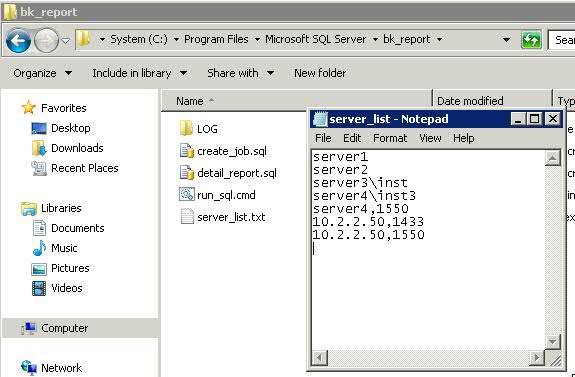There are mainly two types of backups:
- Native SQL backups (either stored to local disk or a network location)
- API backups, where software such as TSM/TDP or NetBackup, or CommVault, SQLLite, etc
There could be problems recovering a database if a server has different types of backups configured, unbeknown to the DBA. Per example, if TDP is used, and another DBA takes a local disk backup (out of band backup), it could pose a problem when we are restoring Tlog backups. This script identifies this situation, and lists those databases where different types of backups have been performed. If none are found, the result is blank
/* DESCRIPTION Queries the location of the last X days of databases backups and reviews its location: API, DiskBackup or NetworkLocation If backup location has changed in the last X days, it returns those databases If no change in location n the last X days, it returns empty. CONFIGURATION Set @days for the number of days to search for backups Set @dbname for the specific database; leave NULL for all Compatibility list: MSSQL2012 MSSQL2005 MSSQL2008 MSSQL2000 */ DECLARE @days INT DECLARE @dbname sysname SET @days = 7 -- Number of days. Limited by the history stored on MSDB SET @dbname = NULL -- Specify database like 'database1' . If Null it will do all ---- End of configuration declare @BackupLocation table (i int identity(1,1) ,db varchar(1000) , bk_type varchar(10), bk_Loc varchar(3)) insert into @BackupLocation SELECT bs.database_name , CASE bs.type WHEN 'D' THEN 'Full' WHEN 'I' THEN 'Diff' WHEN 'L' THEN 'TLog' END AS backup_type , left(bmf.physical_device_name,3) FROM msdb.dbo.backupmediafamily bmf INNER JOIN msdb.dbo.backupset bs ON bmf.media_set_id = bs.media_set_id WHERE 1=1 and bmf.family_sequence_number = '1' and (CONVERT(datetime, bs.backup_start_date, 102) >= GETDATE() - @days) --and bs.type = 'D' and bs.database_name like coalesce(@dbname,'%') ORDER BY bs.database_name -------------------------- declare @summary table (i int identity(1,1) ,db varchar(1000), db2 varchar(1000) ) insert into @summary select db, db+'_'+bk_type from @BackupLocation group by bk_loc, db, bk_type order by db select case when count(db2) > 1 then 'Mix Backups Found' else 'Only one Type of Backups' end as 'backups' , db2 from @Summary group by db2 having count(db2)>1 select db, bk_type, case substring(bk_loc,2,1) WHEN ':' THEN 'LOCAL DISK' WHEN '\' THEN 'NETWORK LOCATION' --' ELSE 'API BACKUPS' end as 'Type of Backups' from @BackupLocation where db in (select db from @Summary group by db2, db having count(db2)>1 ) group by bk_loc, db, bk_type order by db
Thank you Andrey for the idea to create this script


